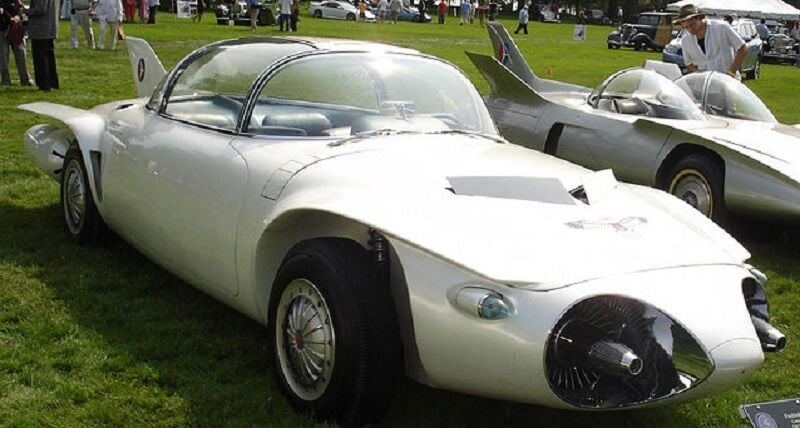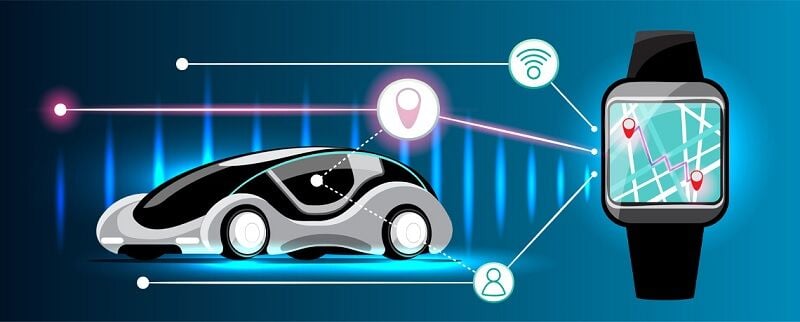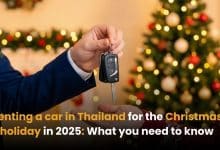The evolution of autonomous vehicles

At the crux of the current technological revolution resides artificial intelligence, which is acting as a catalyst for a remarkable transformation. AI is instrumental to the development and functioning of these self sustaining vehicles, not merely being a constituent, but essentially the fundamental framework enabling the enhancement of safety and efficiency of autonomous vehicles.
As we investigate the varying degrees of autonomy, ranging from Level 0 through to Level 5, we are presented with an enticing array of challenges and prospects. Each level escalates in terms of complexity and diversity, with AI algorithms progressively becoming more sophisticated, engendering a significant shift towards Software Defined Vehicles.
Despite the swift advancement of autonomy, it has not been devoid of impediments. The regulation of these autonomous vehicles has emerged as a sophisticated undertaking. Thus, prepare yourself as we embark upon an exciting voyage through the evolution of autonomous vehicles.
The origins of autonomous vehicles

Continuing our dialogue on the evolution of autonomous vehicles let’s dive into the roots of the autonomous vehicle narrative. This chapter traces the starting points, the visionaries and the groundbreaking technological revelations behind autonomous vehicles.
Early concepts and visionaries
In the landscape of autonomous vehicles, the first seeds were planted by visionaries as early as the 15th century. Imagine Leonardo da Vinci, the Renaissance man himself, pontificating on the idea of vehicles moving independently. Fast forward to 1925, Francis P. Houdina, an electrical engineer, dared to dream, radio controlling a full size automobile through the bustling streets of New York. Though the vehicle met an unfortunate end, his endeavour kindled a flame in the realm of automation.
The bold, revolutionary ideas were not confined to the realms of the West. In the far East, in 1993, Professor Han Min Hong in South Korea embarked on a pioneering quest for a self driving car. Over two years, his test vehicle accumulated an impressive 17 kilometers, driving around Seoul and advocating the prospect of a driverless future.
The role of technology demonstrations
The emergence of technology as a driving force in autonomous vehicles became more pronounced as societies meandered into the 20th century. RCA Labs, in 1953, breathed life into a system that controlled a miniature car. This exciting invention sparked the curiosity of traffic engineers like Leland M. Hancock, triggering a series of experiments on actual highways.
In 1996, Professor Alberto Broggi took the mantle and initiated the ARGO Project. Under his vigilant eye, a modified Lancia Thema followed painted lane marks on an unmodified highway. Covering a staggering 1,200 miles in six days with an average speed of 56 miles per hour, this demonstration was a giant leap for autonomous vehicles, propelling the technology into mainstream consciousness.
While reflecting on the origins of autonomous vehicles, we see a natural ebb and flow of visionary ideas and technological determinism. These early concepts and demonstrations laid the foundation for the next wave of innovation, propelling us into the future of autonomy.
Technological progress throughout the years
Regarding autonomous vehicles, considerable technological progress has occurred in the preceding decades. Pertaining specifically to this field, there exist two domains that distinctly shine the influence of artificial intelligence and the evolution of sensor and camera technologies.
The Influence of Artificial Intelligence
One significant driver in the evolution of autonomous vehicles is the rise of artificial intelligence. AI has empowered these vehicles abilities to sense, comprehend, and react to their surroundings without human intervention.
DARPA funded Autonomous Land Driven Vehicle project and the EUREKA’s Prometheus Project, which unfolded from 1987 to 1995, illustrate the early integration of AI in autonomous vehicles. Juiced up with robust algorithms and significant computing power on board, these projects laid the groundwork for current AI applications in autonomous driving.
Besides, we cannot overlook Professor Alberto Broggi’s pioneering ARGO Project. In 1996, this initiative showcased the ability of AI to digest and interpret environments through stereoscopy algorithms. This breakthrough, driving a modified Lancia Thema over 1,200 miles mostly in autonomous mode, highlighted AI’s transformative role in the evolution of autonomous vehicles.
Advancements in sensor and camera technologies
In tandem with the rise of AI, advancements in sensor and camera technologies provided the eyes for autonomous vehicles to view the world.
Ernst Dickmanns robotic van, designed in the 1980s, achieved remarkable speeds and demonstrated early uses of sensor technology in autonomous vehicles. Similarly, the ALV project made use of Lidar and computer vision to navigate, fortifying the bond between sensor technology and AI in autonomous vehicle systems.
In the 1990’s, the ARGO Project utilised two low cost video cameras to perceive environments. This demonstrated that minimal hardware, coupled with advanced algorithms, could power an autonomous journey. This approach, focusing on optimising software over hardware, became a game changer in the evolution of autonomous vehicles.
Artificial intelligence has been the engine behind the rise of autonomous vehicles, with sensor and camera technology providing the necessary vision. The breakthroughs witnessed over the decades have placed us on the brink of a future where autonomous vehicles become the norm, transforming our perception of mobility.
Milestones in autonomous vehicle History

Key projects and experiments
Building upon the pioneering efforts, autonomous vehicle experimentation reached new heights through several pivotal projects. In 1953, RCA Labs sparked massive interest by demonstrating a miniature car steered by pattern embedded wires in the laboratory. This foundation led to a real world exploration of such systems, directing our attention towards Leland M Hancock, a traffic engineer, and his director L N Ress from the Nebraska Department of Roads.
In 1993, Prof. Han Min Hong of South Korea pushed the boundary by developing a self driving car. The vehicle, tested in Seoul, amassed a total of 17 kilometres, a remarkable achievement for its time. In a similar vein and just years later in 1995, another vehicle journeyed from Seoul to Busan via the Gyeongbu Highway.
Regulatory and legal milestones
Regulation, however, has been playing catch up with technology. Despite this lag, several legal milestones have occurred. One standout event took place in July 2015 when Google published data on its autonomous vehicle accidents, all caused by human drivers, thereby underscoring the safety potential of their project. The report served as a reality check for regulators and the industry, forcing considerations of how autonomous vehicle technology should be governed.
Recognising such significant strides and potentials in the evolution of autonomous vehicles, the groundwork continues. Our journey traces numerous stepping stones, each a testament to human innovation, propelling us closer towards an automated future.
Current status and classification of autonomous vehicles
In the ongoing journey of the evolution of autonomous vehicles, understanding the current status and classification is pivotal.
Degrees of autonomy in autonomous vehicles
Autonomous vehicles operate along a spectrum of autonomy, delineated from Level 0 to Level 5. Each distinct level introduces its own array of possibilities and conundrums. Classification into these levels is determined by the degree of autonomy which is often characterised by an increasing intricacy and variety of Artificial Intelligence algorithms. The numerical scale that measures the level of autonomy in Autonomous Vehicles specifies the degree of driver participation and the level of vehicle automation.
At initial stages, specifically levels L0-L2, driver assist systems predominantly utilise rule oriented and probabilistic approaches for discrete tasks such as adaptive cruise control or alert systems for lane departures. However, at more advanced stages, namely levels L3-L4, these vehicles significantly leverage machine learning and deep learning algorithms for perception oriented roles such as object detection and classification utilising convolutional neural networks.
Advanced sensor fusion methodologies amalgamate data sourced from cameras, Light Detection and Ranging LiDAR, and radar technologies to offer truly autonomous capacities.
The future of autonomous vehicles

Predictions and emerging trends
I’m going to shed some light on the future predictions and unfolding trends in the autonomous vehicles arena. As per an authoritative report from Research and Markets, predictions imply the autonomous vehicle market reaching $300 400 billion by 2035.
This paradigm shift has been made possible by integrating artificial intelligence AI in numerous facets of software development within these vehicles. It’s a transformational evolution that enhances efficiency and accelerates innovation.
The scoop on Self Driving cars
You gotta take a sec to think about how self driving cars might change our world and the environment around us. Seriously, these autopilot rides could totally reinvent how we get around, making it safer and more efficient. We’re really hoping they’ll help clear out traffic jams and make car crashes a rare sight.
On the environmental front, these cars could be a real game changer in cutting down carbon emissions. How? Well, they’re real smart in figuring out the best routes and better driving behavior. That means they’re great at saving fuel and avoiding unnecessary detours. All this could shrink the carbon footprint of our commute big time.
We have conducted a comprehensive examination of the historical journey, contemporary circumstance, and projected future of Autonomous Vehicle technology. The transition towards Software Defined Vehicles heralds the advent of a revolutionary epoch in transportation, one that promises to transfix all interested in their journey. It is heartening too, that governments worldwide are cognizant of this development, directing investments towards the requisite infrastructure to consolidate this progression. The pathway to establishing fully automated driving may harbour complexities and uncertainties, yet it is a journey we find ourselves collectively navigating.
Want to no more, Adobe’s game changer generative video transforms the future of editing. In the dynamic landscape of video editing, Adobe is at the forefront with its integration of generative AI video tools. By incorporating third-party generative AI models such as OpenAI’s Sora, Runway, and Pika Labs into Premiere Pro, Adobe is significantly enhancing the capabilities of video editing software.
Latest Thailand News
Follow The Thaiger on Google News:


























